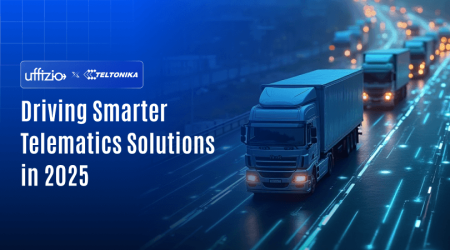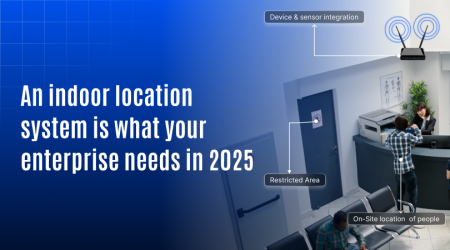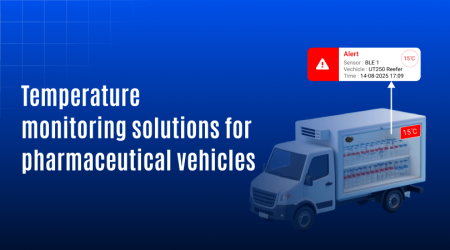The role of waste routing software in modernizing US municipal services

Waste routing software is becoming essential for cities across the United States. With over 250 million tons of waste generated annually, municipalities are under pressure to deliver services that are both efficient and cost-effective. Traditional routing methods often result in missed pickups, route overlap, and higher fuel consumption.
Many US cities still rely on outdated planning systems that lack real-time data. This creates delays, increases labor costs, and limits service transparency. Waste routing software helps solve these issues by using live inputs to plan smarter routes, assign tasks faster, and monitor fleet activity more accurately.
For system integrators, this shift offers a clear opportunity. Municipal clients are actively looking for modern, scalable platforms that support route automation, improve visibility, and reduce operational waste. Offering a solution that includes smart routing is no longer optional, it is expected.
Why routing matters in municipal waste collection
Routing is one of the most critical parts of daily waste collection. A poorly designed route leads to unnecessary travel, increased fuel costs, missed bins, and overworked crews. In many municipalities, drivers still follow fixed schedules that do not adapt to changes like traffic delays, roadblocks, or absenteeism.
Waste routing software replaces guesswork with real-time planning. It helps managers avoid route overlaps, distribute workload evenly, and reduce total drive time. This results in better fuel usage, lower emissions, and timely service delivery. This ultimately helps in improving public satisfaction and reduce costs for the city.
For system integrators, offering efficient routing tools adds measurable value to any waste collection project.
Core features of waste routing software
Waste routing software brings structure and automation to daily collection tasks. Here are the key features that make it valuable for municipal operations:
Route planning based on task and zone mapping
Managers can create collection routes by assigning jobs based on zones, bin clusters, and vehicle capacity. The software assists in planning the most efficient path to complete all assigned stops within the selected area.
Live monitoring of vehicle and crew movement
Each collection vehicle can be tracked in real time along its assigned route. The dashboard shows current location, job progress, and estimated completion time. This helps supervisors respond quickly to route delays or diversions.
Flexible job scheduling and rescheduling
If a driver is unavailable or a bin site needs urgent pickup, managers can reassign tasks or edit the schedule mid-route. This helps maintain service continuity even when plans change unexpectedly.
Load tracking through sensor integration
Vehicles equipped with load sensors transmit weight data directly to the platform. Managers can view live load status, detect overloading, and compare average waste volumes across trips or routes.
Bin management through mobile app scanning
Waste collectors can scan QR or RFID codes to update bin status, such as new installation, relocation, damage, or retirement. This ensures clean and current bin records without relying on paperwork.
Pre- and post-trip inspections with image proof
Drivers are required to perform visual checks of their vehicles before and after each route. The app records photos from multiple angles along with odometer readings, ensuring compliance and road safety.
Crew attendance and role linking
Both drivers and helpers are tagged to each job. While drivers log in via the app, helpers are tracked and marked present by managers. This adds clarity to daily job assignments and staff accountability.
Integrated complaint handling
Citizen complaints about missed pickups or damaged bins can be linked to specific routes or jobs. The system allows quick resolution by assigning these to the next available route in the affected area.
Complete performance reporting
Software compiles daily reports including job completion rates, missed collections, load summaries, and vehicle-wise productivity. These insights help municipalities and contractors evaluate and improve their operations.
These features make it easier for cities to manage large fleets, track every job in real time, and make route planning more accurate and adaptive.
Benefits of using waste routing software
- Improves operational efficiency
Smarter routes and real-time scheduling reduce delays, repeated trips, and fuel costs. - Reduces manual planning time
Managers spend less time assigning jobs or handling route conflicts, allowing more focus on service quality. - Enhances service reliability
On-time collections and better route coverage improve trust with citizens and reduce complaint volumes. - Supports field visibility and accountability
Managers can track vehicle movement, crew activity, and job completion from one dashboard. - Prepares municipalities for audits and compliance
Digital records of collections, inspections, and crew logs make it easier to meet reporting standards. - Increases system integrator value proposition
Offering a ready-to-deploy, routing-enabled solution helps integrators close deals faster with municipalities. - Promotes scalability and customization
Works for cities of all sizes with the ability to expand features or adjust workflows based on local needs. - Enables faster issue resolution
Missed jobs or complaints can be auto-tagged and rescheduled without waiting for manual follow-ups.
Conclusion
Waste routing software is a future upgrade and a present-day necessity for municipalities. This aims to deliver better, faster, and cleaner public services. With features that streamline planning, increase visibility, and reduce costs, it empowers cities to modernize without overhauling their entire infrastructure.
For system integrators, offering such a solution is a chance to meet real demand with real value. As more US cities seek smarter waste operations, the time to lead with a routing-enabled platform is now.




